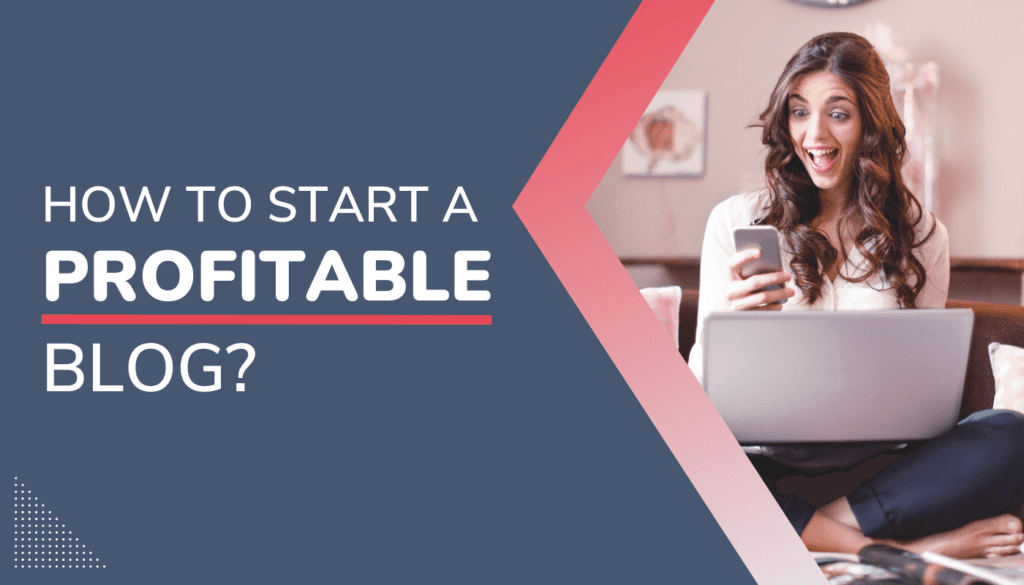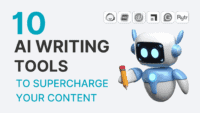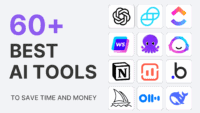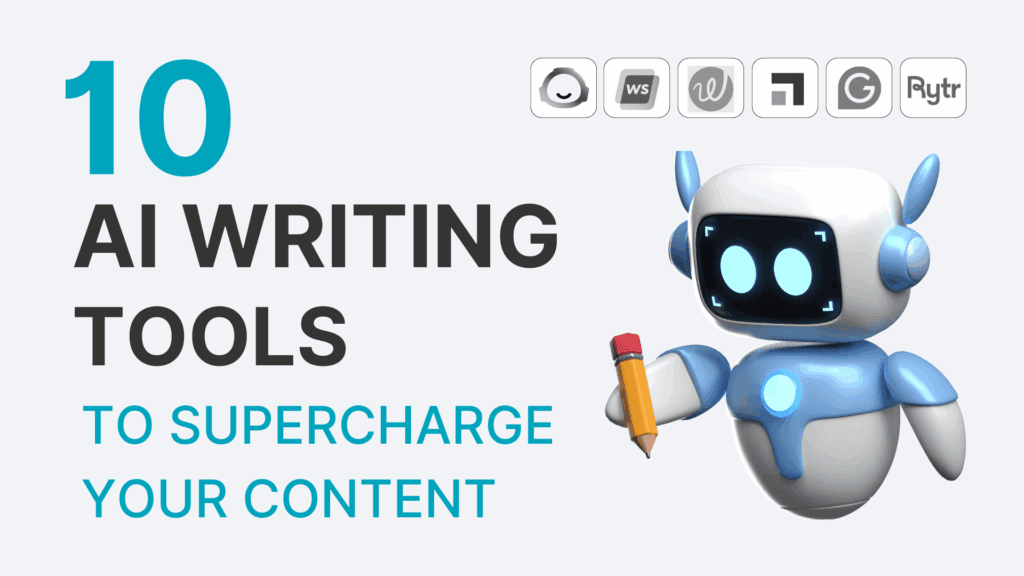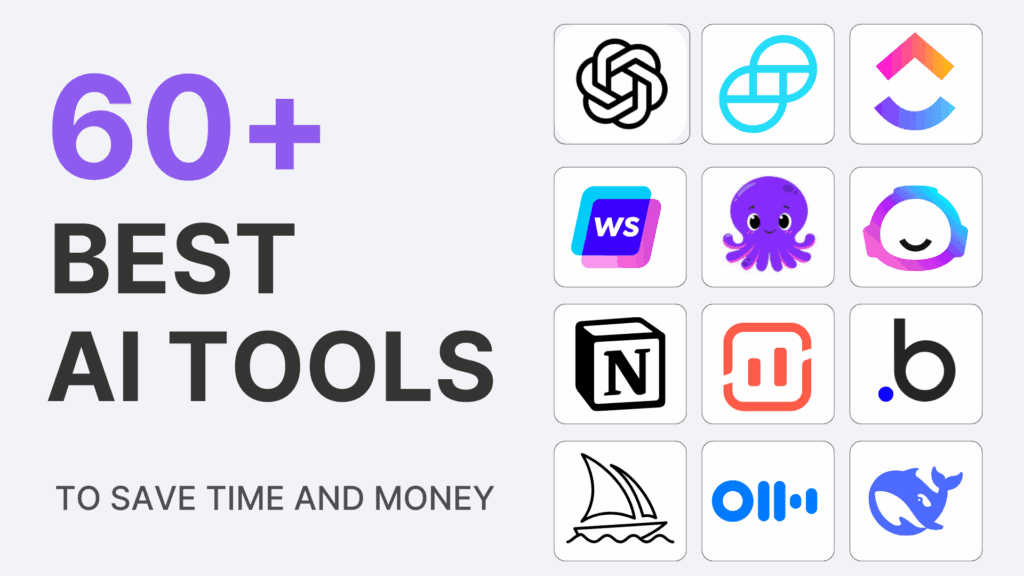If you are looking to learn how to start a blog that will help you generate passive income, then you are in the right place! We have created this guide to help you start your blog as you would prepare a 1-million-dollar product launch. The key to success is simple; PLANNING.
Reasons to Start a blog
There may be hundreds of reasons or motives you decided to think about starting your own blog. The main question you probably already asked yourself is WHY? WHY NOW? There are several reasons such as:
- To inspire an audience about your passion or hobby
- To quit your 9-to-5 job and dedicate full time to becoming your boss
- To seek financial freedom and prepare for a comfortable and stress-free retirement
- To create a side hustle when you just started out a new entry-level job
- To spend more time with your family
It is important in this step to identify your reasons and motivation to start a blog and to write them down.
Starting a blog is a true journey; no matter where you are if you want to start a blog that will generate passive income, you need to put away the fear of failure, fear of missing out on something, fear around money, lack of confidence, discomfort with risk … .and you just get started!
How to Start a blog: the entrepreneurial mindset
This guide is designed to help future bloggers, entrepreneurs, and creators who are serious about starting a blog that will engage with an audience while generating traffic and income. For more info on how to set up your hosting service and create a web-friendly WordPress structure, check out our technical guide to set up your blog online.
We are not going to lie, without a minimum of creative flair, technical knowledge, passion, marketing background, and writing skills, it may be more challenging to start generating money right away. The great news is that we wrote in this article everything you need to know to start a blog and think like an entrepreneur to reach your goals more quickly, even without the technical, creative, or marketing background. Trust us, we’ve been there too!
Our staff’s experience in digital marketing and media strategies allowed us to fail many times and for many years before you even started to read this article. And this is from these failures that we have gained most of our knowledge to help solo entrepreneurs, side hustlers, future business owners, and digital creators like yourself start a profitable blog in no time. You don’t have to be a copywriter, web developer, or even a designer to start a blog. You just need the “good” strategy to help you from day 1 to understand the process and start thinking like an entrepreneur.
It is time to break those beliefs such as:
- “Where do I start?”
- “What blogging platform to choose?”
- “I need a significant budget to promote my blog“
- “It’s too difficult to write 10 blog posts per month”
- “Why haven’t I made any money yet, it has been 6 months!”.
You will learn that once you start a blog, you won’t have to worry about doing it all perfectly; you will be too busy starting to enjoy your entrepreneurial journey. Everything will naturally come into place.
As a smart blogger, you need to start thinking about your new blog and any blog post ideas. There are three main factors every entrepreneur should focus efforts on:
- Offering Value – what value are you offering to your audience
- Nurturing your relationship with your audience – your subscribers, customers or clients
- Engaging with the social community – social media groups, networks, etc.
These are the pillars you need to constantly keep on your radar when starting a new blog. Smart entrepreneurs, or in our case “blogpreneur” successfully leverage these three factors. Once you switch gears and find your inner entrepreneurial mindset, we will be ready to dive into finding the right niche for you and setting up your goals. Are you ready to 360 your life and start your blog? Let’s dive in then!
Get Your FREE 7-day Email Course
Starting a profitable blog has never been that easy!
Everything you need to know about selecting the right niche, planning your blog design and content, setting up on WordPress, implementing SEO and keyword strategies, monetizing effectively, creating a sales funnel, and unlocking your final 90-day plan.
We respect your privacy. Unsubscribe at anytime.

Select a profitable niche for your blog
First thing first, you need to position yourself as the go-to source for a specific audience not only to build your credibility over your direct competitors but to help emulate a unique value proposition for your audience to say: “ yes, this is what I need. I am finally in the right place.”
YOUR VALUE OFFER = YOUR AUDIENCE PROBLEMS SOLVED
But it is not enough to measure if a niche has revenue potential. If you think like an entrepreneur, you will understand that choosing a niche based on your skills, passion or interest is not enough.
The secret formula for selecting a profitable niche is based on 3 factors:
- Audience budget potential
- Niche size and competition
- Keyword research
It does not have to take days and months to identify the best niche for your blog. Let me give you details on how to do your own research and efficiently start a successful blog.
If you identify your audience problem and you prepare your blog strategy and craft an offer or value proposition with the only goal to provide value to your audience, then you have done 90% of the work on the strategy. But you need to ensure – when you select a niche for your blog – to look at a central element that will make the whole difference in the money you will make.
Audience Budget Potential
When you choose a niche you have an interest in or passion for, you already understand what type of problems the audience may have, but if your audience is not willing to spend money, it will be challenging to generate income and scale your blog. Identifying monetizable niches and searches is critical if you plan to monetize content early and be profitable within months.
If you combine your passion and expertise with the right-sized niche with high audience revenue potential, you can start making revenue by month 1 post-launch.
Finally, you need to understand how much your audience is willing to spend to solve their pain points. This is your audience revenue potential.
Let us give you an example:
Let’s say you’re planning to start a blog about Real Estate and Homeownership. Your blog posts may pull in different types of readers, homeowners, home seekers, etc.
To monetize a blog in this niche, let’s say you create the following sales funnel strategy::
- You write new fresh content to attract future homeowners
- Next, you build a “how to select the right homeowner insurance checklist” lead magnet to generate email opt-ins.
- Third, you place affiliate links to some products you want to promote.
- Finally, you offer a $99 product called “The Complete First-Time Homebuyer Guide.”
So far, this seems to be the correct sales funnel. With this approach, it takes up years to build your list and monetize traffic coming to your guide. However, by shifting your audience targeting strategy in this niche, you can 10x, 50X, and even 100X your blog’s income potential.
Instead of targeting home seekers, target real estate professionals. Here’s why it will be more profitable:
Businesses have larger spending power than individuals and are more likely to pay you without hesitation. You don’t just stop at offering a $100 offer. You can add a full coaching service, offer advice on how to master home buying, offer negotiations, and close more deals. You can charge $999+ per month for this coaching service while offering Real Estate companies advertisements and prices for getting listed on your blog. Say you can charge a $99 yearly fee for a listing page.
- In the B2C model, you can make a one-time $100 per conversion
- In the B2B model, you can make a recurring $1,000 per client + $100 for the yearly fee.
That’s 12X more revenue potential when shifting your audience targeting in the niche you picked!
To recap, when choosing a profitable niche, focus on an audience with a high budget and potential willingness to pay for your offer.
We hope you start to understand the importance of thinking like an entrepreneur and looking for a smarter way to automate passive revenue. This proves to be a highly effective strategy, especially when you just start out with little traffic and small email lists.
Now, let’s take a look at how to select a niche based on the size and competition and start building your blog traffic and eventually attract more visitors to your site to engage with.
Niche size
Your niche should not be too broad or too narrow. For example, if you are interested in starting a blog about a broader niche such as organic food, there are 1.79 billion results on Google Search Results.

We could say this niche has a good size based on the number of results when searching for ‘organic food’. But if you plan to start a blog and become a trusted and reliable source and authority in that space, successful bloggers will brainstorm blog topics and create a blogging strategy to only focus on a subset of this large niche such as organic food for pets for example. This strategy will help you build topical authority for the ‘organic foods for pets’ much faster than competing against very well-established bloggers in the ‘organic food’ space. You can then build a content strategy for your entire blog around healthy food solutions for dog owners, top organic dog food brands, expert reviews, etc.
Facebook audience insights tool is a great FREE tool that can help you find an audience size and validate if a niche is sizable enough to be monetizable:
Narrowing down organic foods to 25-to-45-year-old dog owners, who have an interest in organic food and brands such as Merrick and Organix (high-rated organic dog food) you can identify an audience size of 45M-50M which is the right size.
Additional insights indicate that this niche is 62% women, another good insight to position your blog to appeal to a female audience.
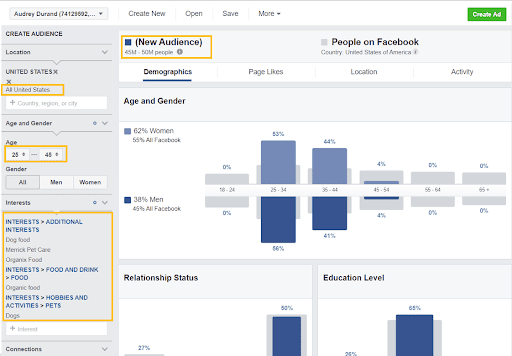
Once you select a niche and identify a potential audience to target, it is time to look at the competitive landscape
Niche Competition
Having good competition in the niche you pick is an additional good sign that you are driving into the right sizable market with revenue potential.
Looking at the keyword you have previously searched for on Google, you can have an idea of who you will be competing against. If you are serious about making passive income, you need to analyze how the competition is doing.
Find out what your competitors are doing
- What type of content do they offer?
- Where and how do they promote content?
- What topics are discussed?
- How do they stand out on social media
- How do they communicate with their subscribers?
- How do they make money with their blog?
SimilarWeb is a great tool to look for your competitor’s performance, traffic, audience interests, and stats. It provides you with information about everything you would want to know about your competitors such as traffic trends, best-performing ads, top content, top referral, and most converting keywords and the list can go long.

Subscribe to your top 5 competitors’ blog newsletters and social media channels
When you start your blogging journey, you need to think about how to continue to engage with your audience off-site. Continue to review how your competitors communicate with their subscribers, what type of content they send, and what is the frequency.
- Newsletter Updates.
- New Content Release and messaging
- Trends monitoring
- etc.
This will give you a great idea for new content ideation to plan once you build your email communication with your subscribers. There are various ways to generate revenues with your blog and if you are ready to start blogging as a startup, writing content is not all, you need to start building and engaging with your audience. Once you identify the size and competitiveness of your niche, it is time to do your keyword research and find your “angle of attack”.
Keyword Research
Once you have written down your blog goals, selected a profitable niche, and found out what competitors in this niche are doing, let’s dive into how your audience searches online and how to build an organic traffic strategy to rank for the most relevant and ‘monetizable’ online searches:
“Keyword research is the process of finding and analyzing actual search terms that people enter into search engines. The insight you can get into these actual search terms can help inform content strategy, as well as your larger marketing strategy.”
- Are people searching for what you want to write?
- Who appears on top results for the keywords I want to target?
- What content/topic my direct competition is writing about?
To start making money online with your new blog, you first need your site or blog to be visible and discoverable by your audience online. For that, you need to leverage keyword research to create content that will rank high enough on Search Results.
How does the keyword research process work?
There is an easy approach to selecting the top 5 keywords and developing a successful content strategy around:
- List 10 search terms and relevant topics related to your niche
- Write down the site and blog organic results showing on page 1 (exclude Ad results)
- Browse the site content and topic for each of this site
- Analyze Keyword and search intent for each of these sites;
- Look for Keyword volume, difficulty, and CPC data.
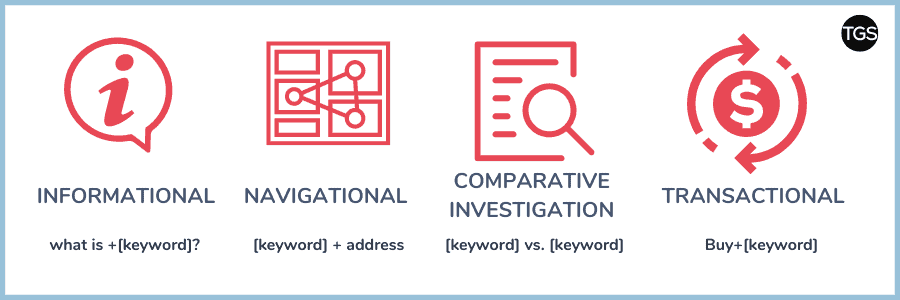
Keyword volume is the average number of monthly searches
- 0-1,000: Low
- 1,000-5,000: Low/Medium
- 5,000-20,000: Medium
- 20,000-100,000: High
- 100,000+: Very High
Keyword difficulty is an index that indicates how hard it would be for a new blog or website to rank for the keyword. It is measured on a scale from 0 to 100:
- 0-20: Low
- 21-50: Medium
- 51-75: High
- 76+: Very High
CPC – short for Cost Per Click (in $) is the average price advertisers pay for a user’s click on an ad triggered by the analyzed keyword (Google Ads). This is a good metric to look for in building organic traffic. The higher the cost, the more popular and competitive r the keyword is.
Competition – How many advertiser bidders and online competitors are already targeting your keyword? Usually the higher the competition, the higher the CPC if your advertisers run paid advertisements targeting the keyword. This is usually measured on a scale from 0 to 100.
- 0-20: Low
- 21-50: Medium
- 51-75: High
- 76+: Very High
Check out our guide on How to Build an Effective Keyword Strategy in under an hour for more information on how to structure your keyword research and to learn more about keyword search intent.
Top Profitable Niche Markets in 2025
If you have no ideas on how to start a blog and make money, a good starting point is to look at the 10 most profitable selling markets and niches in the US and see if you have any natural affinity or interest with one of the following:
- Personal Finance (duh)
- Health & Fitness
- Dating & Relationships
- Food & Drink
- Education
- Travel
- Home Improvement & DIY
- Parenting
- Marketing & Online Business
- Technology & Science
If you are interested in the WeighLoss niche because you want to help people struggling with their weight and/or because you have a personal story to share with an audience, this market has different audiences looking to resolve different problems. You can target à specific audience based on search intent and start writing blog posts with useful and relevant content your content will engage with.
For example, you can start a blog about keto diets for mums or weight loss programs for seniors, etc.
The Coronavirus brought a lot of light on the CBD and Adult niche markets; these are worth over $20 billion, enough to guarantee you high earning potential if you decide to start an affiliate blog about CBD product reviews for example. These markets have hundreds of companies offering affiliate marketing programs you can sign up for to monetize your blog.
But before launching a blog about CBD and/or adult products/services, ensure you understand legal restrictions, market compliance, and health claims as these are heavily regulated markets.
Get Your FREE 7-day Email Course
Starting a profitable blog has never been that easy!
Everything you need to know about selecting the right niche, planning your blog design and content, setting up on WordPress, implementing SEO and keyword strategies, monetizing effectively, creating a sales funnel, and unlocking your final 90-day plan.
We respect your privacy. Unsubscribe at anytime.

Write Down Your Blog’s Goals
When you start a blog, you need to establish your short and long-term goals. What are you trying to achieve with your new blog? The best approach to validate your goals is the SMART approach:
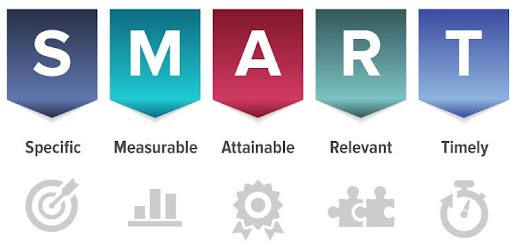
- SPECIFIC – What are your exact goals? Do you want to acquire 100 subscribers in 30 days to your list?
- MEASURABLE – What metrics will help you measure the activity necessary in reaching your goals such as unique blog pageviews, click-throughs, conversions, numbers of backlinks, numbers of referrals, social shares, etc?
- ACHIEVABLE – “Rome wasn’t built in a day” and so not will your audience. You need to set goals and milestones to help you keep the motivation for bigger goal targets.
- RELEVANT – You cannot grow your list without first driving traffic to your content. You should not boost a post about natural cures to relieve arthritis pains to a graduate looking for an energy-boosting shot to help them pass through exam periods. Your goals need to stay relevant and coherent. In the first 30 days, you should focus on creating targeted content for your audience, and building your blog traffic.
- TIME-BOUND – Set timing expectations with clear deadlines and due dates.
Examples of short-term goals (0-90 days) you should be setting can be:
- Write your 3 pillar long-form blogs within the next 30 days
- Increase your traffic by 10% monthly
- Write at least 1 blog post a week
- Get your first 500 subscribers within the first 90 days
- Increase your email Opt-In Rate by 50% by month 3
- etc.
Examples of longer-term blog goals (12 months and up) can be:
- Build your online authority and site DA 40+ with quality backlinks.
- Develop your blog business model to grow 20% increase in annual income
- Develop relationships with experts in your niche for potential co-marketing opportunities
- Build and nurture your network
- etc.
Take a few minutes to write down your own goals. Once you better define the reasons to start a blog, select a profitable niche, and write down your goals, it is time to create your content strategy roadmap.
Prepare your Blog Content Strategy
If you are serious about launching a successful blog, you should focus on the 3 main blogging principles to build your content and keyword strategy around: :
- Create Pillar blog posts to build traffic to your blog
- Create Auxiliary blog posts to monetize your traffic
- Create Blog Posts to grow your email list
Building your traffic with Pillar blog posts
Pillar blogs are long-form posts created around your pillar-blog keywords. These blogs will help you drive traffic to your site. You should focus content around keywords with high search volume/high CPC /medium difficulty.
Pillar articles with long-form content are on average 4,000 to 8,000 words.
Monetize your blog content with auxiliary blog posts
Auxiliary posts are closely-related topics that focus on offering a more direct solution to your audience’s problems. Traffic landing on these blogs is usually close to converting or taking action. These blog posts are usually shorter than your pillar posts and should target medium search volume / low-to-medium competition / high CPC keywords.
You can use Ahref to analyze keyword and competition data for your niche
For example, if you start an affiliate blog review about baby clothes, it will be quite easy to start ranking for ‘designer baby clothes’ exact keywords and longer-tail variations (keyword difficulty below 30), there is a sizeable audience and monthly search volume (5.7K) and a $1.10 CPC that indicates advertisers are bidding for ad placement online.

For example, you can create a transactional last blog post about the “Best designer baby clothes for girls” and monetize results by promoting designer clothes brands using affiliate links
Google Search also offers a lot of great content suggestions for your auxiliary post. Results for searches related to your keyword are usually on the top or the bottom of the Search Engine Result page (SERP)
Image related search
Revenue-driver blog posts usually focus on keyword variation with “ how to”, “best”, “top”, “cheap” etc. 80% of the posts online starting with those terms are usually affiliate blogs.
Create blog posts to grow your list
Once you develop a blog strategy to build traffic and revenue, you need to think of an additional type of content that will help build backlinks and grow your email list and give you a potential to grow 3X your revenue potential.
The offer can be diverse based on the niche you are in. For example, it can be:
- 100 Baby clothes deals and coupons
- 30-day keto meal plan to boost your energy – Free PDF
- etc.
Wrapping up on keyword research and strategy.
Keep in mind to focus your keywords around:
- Long-form Pillar posts to build traffic
- Revenue-driver posts
- Direct Your offer to build your email list
Blog Content Types
There are different types of content and best practices to help you start creating new ways to communicate and engage with your audience. All these types of content can be promoted using the right monetization techniques:
- How-tos $ educational content
- Transactional Lists
- Product Reviews & Comparisons
- Checklists
- Articles & Market Research
- Shopping Guides
- Testimonials
- Q&As
- E-Books
- Cheat Sheets
- User-generated content (UGC)
- Press Releases
- Infographics
- Images & Screenshots
- Videos & Livestreams
- Audio & Podcasts
- Interviews
- Other Multimedia content
Create a blog editorial calendar
Streamline your content strategy with the creation of your blog editorial calendar.
- Keyword/Topic
- Target audience
- Content Focus
- CTA and offer
- Publication date
- Author
Create and structure your brand pages
As you are getting ready to start your blog with a smart profitable niche selection and keyword research approach, there are 6 pages that will need all your attention. These are your Minimum viable pages (MVPs). These pages are the brand signature and promise of all the work you put into your blog to provide useful content, build your audience, and make money.
Your Homepage
The homepage is a great place to convert your visitors to whatever goals you set for your blog. This is your business card and while pages are static (versus blog posts), this page will update as you continue to grow your traffic and identify the best way to engage with your audience. Take the time to give attention to the following:
- Add your logo and tagline
- Add an eye-catchy headline in direct relation to your audience’s problems. Once your visitors land on your homepage they need to have a clear idea of who you are and above all what topics and content you offer to help them find answers to their problems.
- Give a reason to your visitor to stick around and convert into a reader, a lead, a subscriber, or a client.
- Feature your top blog posts and articles (at least 1 pillar blog and 2 auxiliary posts)
- Add internal links that point to your different blog categories
- Craft your message with lead magnets (Call-to-actions, email capture forms)
- Offer useful and FREE content to build email opt-ins
- Add your social proof to build trust and authority
About page
Your ‘About’ page is telling your story to connect with your audience. How everything started. This page is going to connect with your audience and add credibility and authenticity to your blog. A good opening story entices blog visitors to read your blog post. It is also a great occasion to explain why you started this blog, your experience, and your background.
The essential elements of your ‘About’ page should include:
- Who you are
- What you do & your Mission
- A benefit-driven headline to excite your audience
- Your experience but also your challenges
- Success stories and life events your reader can relate to and influence their decision-making process
- Invitation to subscribe to your newsletter
- An additional call to action and internal links to relevant content in your blog.
If you build a personal brand and use your name to establish yourself as the authority, this “About / Story” page becomes essential. You can start generating search volume for your own keyword name!
Note: Building a personal brand can also help you pivot more quickly if you pick a niche that is too competitive or without enough monetization potential.
For your ‘About’ page, you can use ‘emotional’ words that help you build a connection with your target audience. A visitor lands on site to look for a solution to a pain point. Use high-impact words such as care, thankful, delighted, struggle, help, support, safe, truly, worthwhile, doubtful, insecure, etc.
Once you crafted your ‘About’ Page, let’s review how to structure your ‘Contact’ page.
Contact page
On this page, if you create enough excitement with your blog readers, they will want to learn more, ask questions, and contact you to partner with you. Create a Contact page that includes the following elements:
- Prepare a short introduction to guide the readers to take action
- Include information such as email address and any other information you are comfortable sharing on your blog.
- Offer many reasons to contact you whether it is about a technical issue, to contribute to your blog, to work together, or simply to say “Hi”,
- Include your contact form. Limit the form to up to 4 field maximum
- Add your social proof and link to your social media accounts
- Prepare a “Thank you” page including useful links to content for your reader to continue engaging with
Note: Your contact form should not be a newsletter form to grow your email list.
Disclaimer & Policy pages
When you launch a new blog, you need to ensure you have a disclaimer and privacy policy page with all the appropriate statements related to online blogging and any specific aspects of your blog. A blog disclaimer is a statement to let your reader know that if they rely on the information you provide, you won’t be liable for any issues with your site and the information for which you provide a disclaimer.
A safe way to approach content for this page is to include the following :
- Nature of your blog
- Opinionated content
- Accuracy of information
- Terms of Use
- Cookie use
- Affiliate Disclaimers
- Reservation of rights
- etc.
A good way to get started with this page is to look at your top competitor in your niche and review the structure of their disclaimer and policy pages. You can, then, adjust based on your particular blogging activity and content that would require legal statements.
Create SEO-friendly blog pages and articles
To rank on Search results, not only do you need to create content with high Experience, Expertise, Authoritativeness and Trustworthiness (E.E.A.T) signals -Google’s Quality Rater Guidelines for Search. If you are not familiar with Search Engine Optimization, SEO is a collection of techniques that help blogs and websites gain organic visibility on Search Result Pages. Nowadays, online businesses and bloggers need to focus efforts to appear within the top 20 results of the Result pages, that is on Page #1 and Page #2 (before Google released its infinite scrolling updates, deprecating the concept of ranking in page results). The deeper your rankings on Search Results, the less chance to get impressions, clicks, and traffic to your blog content.
SEO is centered around three major elements: CONTENT – KEYWORD – LINKS
Simply put, your blog content needs to follow a set of optimizations called “on-page optimizations” that will send strong signals to search engines that in exchange will ‘reward’ you with great rankings on search results pages (SERPs). To earn good rankings, you need to leverage keywords and links.
It is important to create SEO-friendly blog articles using the target keywords that you have researched and selected while writing fresh, useful, shareable, and relevant content for your audience. Once your content is live, you can earn natural backlinks from other sites referring to your content and pointing back to your blog page. Think of backlinks as online “votes” that measure the popularity of your content and establish your blog domain authority.
A blog post should cover a topic your audience is interested in and should answer a problem.
To rank (high) on Search Engines, you need to include your targeted keywords in several areas of your blog post.

Top SEO on-page tactics for your blog post:
- Include your keyword in your post or article permalinks. A keyword-rich url has more chances to rank higher.
- Add your keyword in the post title of your post or article
- Include your keyword in the first paragraph to send a strong signal to the search engine for the topic of your post.
- Sprinkle your keyword in your additional paragraph. Be careful not to add it to every sentence. This is called “keyword stuffing” and search engines are not too” fond” of this type of manipulation to gain rankings. The search engines may penalize you in the long run with lower rankings. An ideal keyword density is 1-2% of the overall content.
- Include your keyword in your headings
- Add your keyword in your blog metatags (meta title and meta description)
- Provide a keyword-rich image alternative text. This will be very helpful for your vision-impaired audience or in case your image does not properly load.
If you set up your blog on WordPress, Yoast or RankMath are the best SEO plugins to help you ensure your content is optimized for a targeted keyword, useful for users, and following Search Engines’ best practices. For more in-depth information on how to optimize your blog and page, you can check out the complete Anatomy of an optimized blog article.
Wrapping-up
Congratulations on your decision to start a blog and to review how to select a profitable niche with high revenue potential, prepare your keyword research to build a successful content roadmap for your target audience, and plan for the ongoing pages, blogs, and content optimization to grow and scale traffic.
If you have not set up your blog yet and registered a domain name and web hosting service, check out the Technical Guide to Starting a Blog, a step-by-step guide to picking your domain name, choosing a blogging platform, picking the right themes and plugins, and create an SEO roadmap for your content.
Read More:
Get Your FREE 7-day Email Course
Starting a profitable blog has never been that easy!
Everything you need to know about selecting the right niche, planning your blog design and content, setting up on WordPress, implementing SEO and keyword strategies, monetizing effectively, creating a sales funnel, and unlocking your final 90-day plan.
We respect your privacy. Unsubscribe at anytime.



